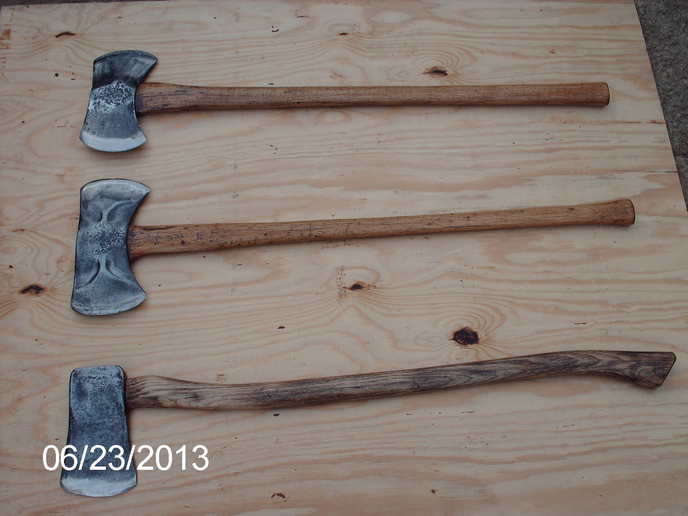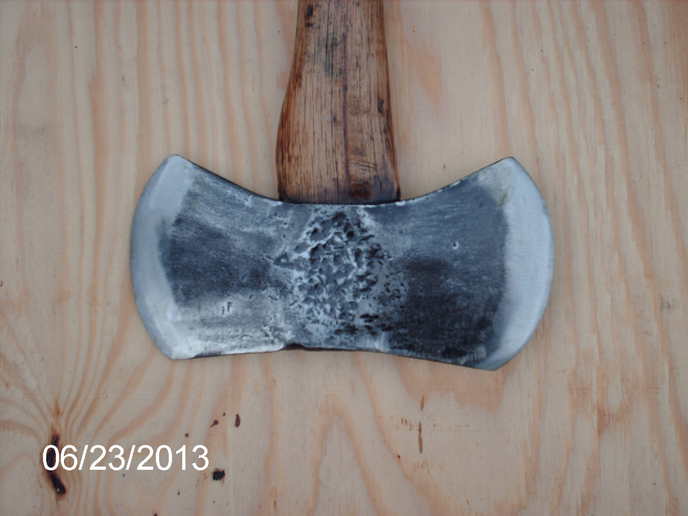You should upgrade or use an alternative browser.
- Thread starter inkspot
- Start date
Anonymous-0
Well-known Member
USFS axe video
MarkB_MI
Well-known Member
- Location
- Motown USA
Stan in Oly, WA
Well-known Member
Stan


Stan in Oly, WA
Well-known Member
Thanks for your interesting and informative response. When you say "if you have a good axe and a poor axe and spend an hour using each of them", I guess that gets to the heart of the matter. I'm not sure I've ever spent a whole hour using an axe, and if I have, it's been more than 40 years ago. I have several axes which I'm beginning to realize fall into the category of tools which I like and respect, but actually have little or no use for. Others I own which also fall in that category include a peavey, a brush hook, several draw knives, hand planes, braces and bits, and probably a dozen or more others which I can't think of right now. All I can say is that I'll be pretty well set up for hand tools if we ever go back to pre-industrial conditions.
Thanks,
Stan
Even better is my neighbor's wood splitter. . .
Geo-TH,In
Well-known Member
George
Antique sandstone grinder
Geo-TH,In
Well-known Member
Rusty wheel
Well-known Member
Harold Hubbard
Member
Frustration at the dull axe will make this more likely to happen.
(quoted from post at 20:09:10 07/16/13) I still have my g-g-granddads axe that he brought west in the covered wagon. It has had 6 handles and 3 new heads...
:lol: :lol:
Stan in Oly, WA
Well-known Member
I thought I was old school for still using power tools with an extension cord.
I still use non-power hand tools, too, just maybe not to the extent you do. I commonly use handsaws, coping saws, keyhole saws, miter saws, etc. rather than the equivalent power tool---particularly for a small job. I've probably used a small, sharp bow saw for hundreds of jobs where another person would probably use (misguidedly, in my estimation) a chain saw. It's easy to take up a tree or ladder with me, can almost always be used with one hand, starts every time, doesn't kick back, and it's wonderfully quiet. I still nail things together when that's faster than using a nailer, and sometimes when it isn't. However, I feel that the knowledge of how to use those kinds of tools is going to die with us.
Stan
Prawn Farmer
Member
USFS axe manual
Similar threads
We sell tractor parts! We have the parts you need to repair your tractor - the right parts. Our low prices and years of research make us your best choice when you need parts. Shop Online Today.
Copyright © 1997-2024 Yesterday's Tractor Co.
All Rights Reserved. Reproduction of any part of this website, including design and content, without written permission is strictly prohibited. Trade Marks and Trade Names contained and used in this Website are those of others, and are used in this Website in a descriptive sense to refer to the products of others. Use of this Web site constitutes acceptance of our User Agreement and Privacy Policy TRADEMARK DISCLAIMER: Tradenames and Trademarks referred to within Yesterday's Tractor Co. products and within the Yesterday's Tractor Co. websites are the property of their respective trademark holders. None of these trademark holders are affiliated with Yesterday's Tractor Co., our products, or our website nor are we sponsored by them. John Deere and its logos are the registered trademarks of the John Deere Corporation. Agco, Agco Allis, White, Massey Ferguson and their logos are the registered trademarks of AGCO Corporation. Case, Case-IH, Farmall, International Harvester, New Holland and their logos are registered trademarks of CNH Global N.V.
Yesterday's Tractors - Antique Tractor Headquarters
Website Accessibility Policy


